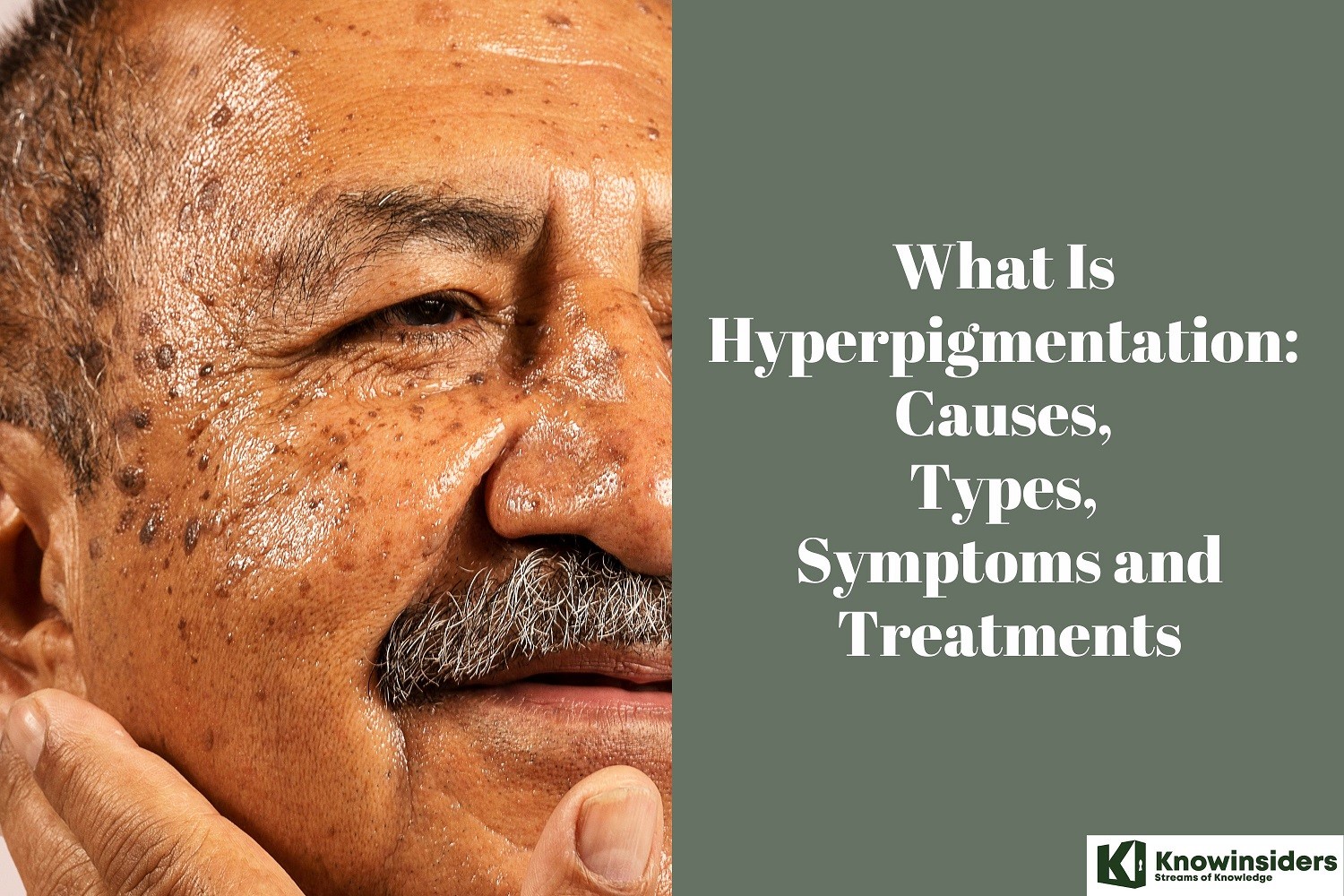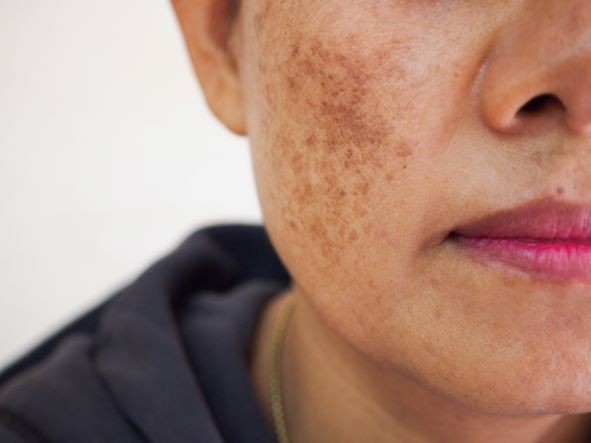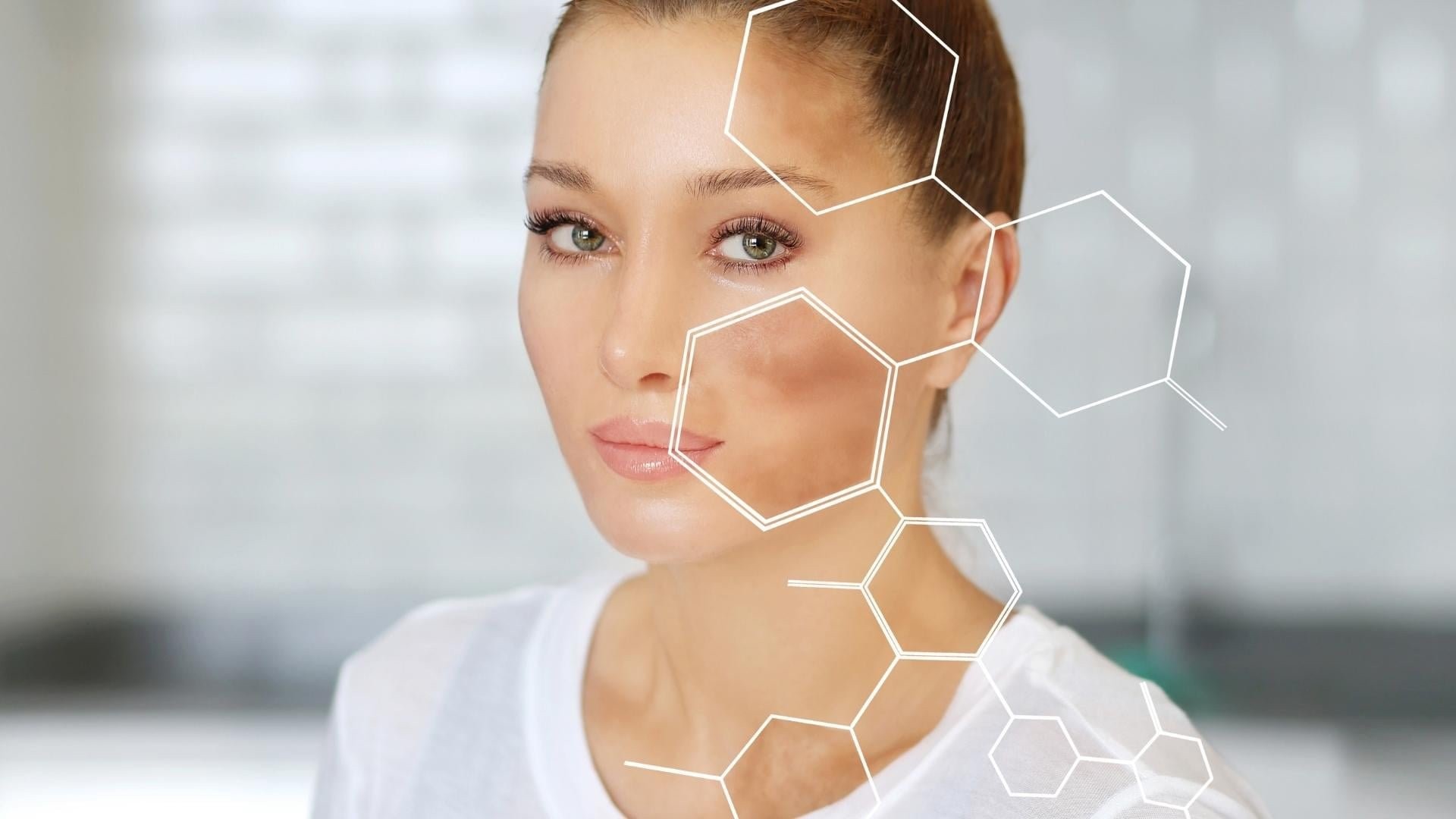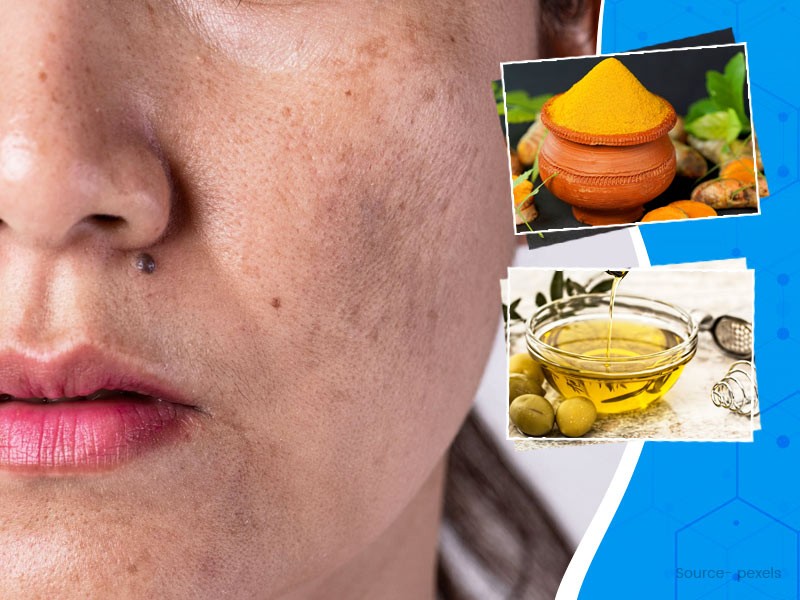What Is Hyperpigmentation: Causes, Types, Symptoms and Treatments
 Top 10 Best Sunscreens For Your Skin Top 10 Best Sunscreens For Your Skin |
 Top 10 Best Scar Creams That Help Heal Your Skin Top 10 Best Scar Creams That Help Heal Your Skin |
 |
| What Is Hyperpigmentation: Causes, Types, Symptoms and Treatments |
| Contents |
What causes hyperpigmentation of the skin? How to prevent hyperpigmentation and is there a definitive treatment? Let's find out together!
Hyperpigmentation is a medical term used to refer to areas of skin that are hyperpigmented leading to darkening. There are many types of hyperpigmentation that we often encounter such as: melasma, freckles, age spots, ... Let's KnowInsiders learn more about skin hyperpigmentation from which to choose the right care course. Perfect for maintaining healthy skin and giving you a confident look!
What is skin pigmentation?
Pigment gives the color of the skin, hair, mucous membranes and retina of the eye. Pigmentation is caused by the deposition of the pigment melanin. Melanin is produced by melanocytes. Some conditions associated with skin pigmentation include: Hyperpigmentation (too much pigmentation), hypopigmentation (too little pigment) and hypopigmentation (loss of pigmentation).
Skin has a natural color independent of the sun and this is the pigment of the skin. Furthermore, skin color depends on the pigment melanin, which provides the skin's natural protection against the effects of UV rays. Melanin pigment is divided into two types:
♦ Eumelanin: This pigment, better known as true melanin, is black or dark brown in color and is found in people with dull, translucent skin (it protects the skin from UV rays).
♦ Phaeomelanin: This type of pigment is also known as red melanin. It usually appears in people with fair skin or red hair. It has no protective effect against UV rays. On the contrary, the synthesis of this type of pigment will generate free radicals that attack the skin.
These two types of melanin pigment are usually present in each person. However, for each individual, the rate will be different. The amount of these two types of pigment will determine the natural skin color, as well as the tan of the skin when exposed to the sun.
What is hyperpigmentation and the different types?
Hyperpigmentation is a condition where patches/spots of the skin become darker than the surrounding skin. This usually happens when melanin (the pigment that determines the color of the skin) is in excess. Hyperpigmentation can affect any skin color or race.
Pigment spots such as age spots
Sun exposure causes pigment spots such as age spots (also known as sun spots). As a result, they are most common on body parts that are frequently exposed, such as the face, neck, décolleté, hands, and arms. They are typically small, darkened patches of skin. You can learn more about what causes them and how to reduce them in this article. What causes age spots and how do I get rid of them?
Melasma
During pregnancy, melasma, a type of hormone-induced hyperpigmentation, is common. Melasma, also known as chloasma, is a condition in which larger patches of hyperpigmentation appear primarily on the face.
Although it can affect both men and women, melasma is more common in women and is thought to be caused by hormonal changes. Melasma affects 10-15% of pregnant women and 10-25% of women using oral contraceptives 1, and is sometimes referred to as "the mask of pregnancy."
Post-inflammatory hyperpigmentation
Systoms of hyperpigmentation
 |
| Hyperpigmentation |
The two most significant risk factors for general hyperpigmentation are inflammation and sun exposure since both can increase melanin production. You are more prone to get greater skin pigmentation the more time you spend in the sun.
Depending on the type of illness, other risk factors for hyperpigmented patches may include:
• Pregnancy or oral contraceptive use, as demonstrated in melasma
• Darker skin types are more vulnerable to changes in pigmentation.
• medications that make you more sensitive to sunlight
• an injury to the skin, such as a wound or a light burn
Causes of Hyperpigmentation
Environmental factors, together with hormonal changes and the natural aging process, are the primary contributors to skin hyperpigmentation.
1. Sun exposure
Because sun exposure causes melanin formation, it is the most common cause of hyperpigmentation. As a result of being exposed to UV rays, our skin produces melanin, which works as a natural sunscreen. But prolonged exposure to the sun, which can cause hyperpigmentation, can interrupt this process.
Once black patches have appeared, prolonged exposure to sunlight might exacerbate them. Spots of post-inflammatory hyperpigmentation, melasma, and advanced age can result.
2. Hormone
Hormonal influences are the main cause of a particular type of hyperpigmentation known as melasma or chloasma. This condition is very common in women and is thought to occur when sex hormones including estrogen and progesterone stimulate overproduction of melanin when the skin is exposed to the sun. Additionally, hyperpigmentation can also be a side effect of some hormonal treatments.
3. Age
As the skin ages, the number of melanocytes decreases, but the remaining cells increase in size and their distribution becomes more concentrated. These physiological changes account for the increase in age spots in people over the age of 40.
4. Inflamed or damaged skin
As its name suggests, post-inflammatory hyperpigmentation occurs after skin damage or inflammation such as: cuts, burns, chemical exposure, acne, atopic dermatitis, or psoriasis. The skin darkens and loses color after the wound heals.
5. Effects of disease and drugs
Hyperpigmentation is also a symptom of a number of other diseases such as autoimmune, metabolic disorders and vitamin deficiencies. It can also be promoted by certain drugs such as chemotherapy drugs, antibiotics, antimalarials and anticonvulsants.
The Treatment for Hyperpigmentation
 |
| Treatment for hyperpigmentation |
The increase in melanin is caused by the pigment cells reacting when the skin is exposed to the sun, which causes hyperpigmentation. Here are some skin hyperpigmentation treatments you can refer to.
1. Apply broad spectrum sunscreen every day
Applying broad-spectrum sunscreen products with an SPF of at least 30+ daily is the most effective home remedy for hyperpigmentation. This is very important to minimize skin darkening caused by the sun's UV rays.
Conversely, applying sunscreen may not be as effective for melanin in the dermis or cause carotene-induced hypopigmentation. Certain medications or tattoos on the skin.
2. Use concealer
With some home remedies for hyperpigmentation as above. You might consider using concealer products on your skin as a solution.
3. Treatment of skin hyperpigmentation with topical medications
The following substances are used to lighten the skin. This hyperpigmentation treatment can also be used alone or in combination for better results in some cases:
• Hydroquinone
• Topical retinoids
• Corticosteroid products applied to the skin
• Glycolic acid and fruit acids.
• Azelaic Acid
• L-Ascorbic Acid (vitamin C)
4. Combination of topical medication and medical therapy to treat hyperpigmentation
By combining certain topical medications with medical treatments such as biological peels, laser treatments, intense pulsed light (IPL and Dye-PL) or microdermabrasion, hyperpigmentation can result. Skin pigmentation can be improved quickly.
Home Remedies for Hyperpigmentation
 |
| Home remedies for hyperpigmentation |
1. Use Apple Cider Vinegar
Apple cider vinegar contains acetic acid, which lightens the skin. To use it, perform the following steps:
► Combine apple cider vinegar and water in a 1:1 ratio in a container.
► Apply the mixture directly to your dark patches and leave it on for 2-3 minutes.
► Rinse with warm water.
► Repeat twice daily for desired results.
2. Aloe vera
Research shows that aloe contains aloin, a natural pigment-reducing compound that has been shown to lighten skin and work effectively as a non-toxic hyperpigmentation treatment. To use it, perform the following steps:
► Apply pure aloe vera gel to the affected area before going to bed.
► Wash off with warm water the next morning.
► Repeat daily until your skin tone improves.
3. Green Tea Extract
Research shows that green tea extract has a soothing effect on the skin. To use it, perform the following steps:
► Soak a green tea bag in boiled water for three to five minutes.
► Remove the tea bag from the water and let it cool.
► Apply the tea bag to the part of the skin you want to improve.
► Repeat twice a day until you get results.
4. Milk
Both milk and yogurt have been shown to effectively lighten the skin, with lactic acid being a key ingredient in this effect. To use it, perform the following steps:
► Dip a cotton pad in the milk.
► Rub it on the darkened areas twice a day.
► Repeat daily until you see results.
5. Orchid Extract
According to research, orchid extract is as effective as vitamin C. Applying orchid extracts to the skin for eight weeks improves the size and appearance of dark patches.
6. Licorice
Hyperpigmentation may be lightened by licorice extracts. According to new research, glabridin, a licorice extract, may have anti-inflammatory, antioxidant, and skin-whitening properties.
Glabridin-containing creams can be applied to hyperpigmented areas.
Conclusion
Lifting stubborn dark spots may require professional assistance depending on your level of hyperpigmentation. Before committing to a chemical peel or intense laser treatment, seek the advice of a dermatologist.
Hyperpigmentation is very difficult to treat definitively and depending on the cause, different methods are applied. The best way to stay away from hyperpigmentation is to find ways to prevent it. A healthy, white, even and youthful skin will always be yours.
 How to Prevent and Treat Dry Skin in Winter How to Prevent and Treat Dry Skin in Winter Cracked, dry skin in winter makes people uncomfortable, even painful. How to get out of this situation? |
 Top 10 Best Sunscreens For Your Skin Top 10 Best Sunscreens For Your Skin Sunscreen should be worn every day, rain or shine. Protecting your skin from the sun is important, regardless of your skin tone, location, or weather ... |
 Top 10 Best Scar Creams That Help Heal Your Skin Top 10 Best Scar Creams That Help Heal Your Skin Scar cream is the best option to heal and help your skin smooth after having infections. Check out Top 10 Best Scar Creams That Help ... |


























